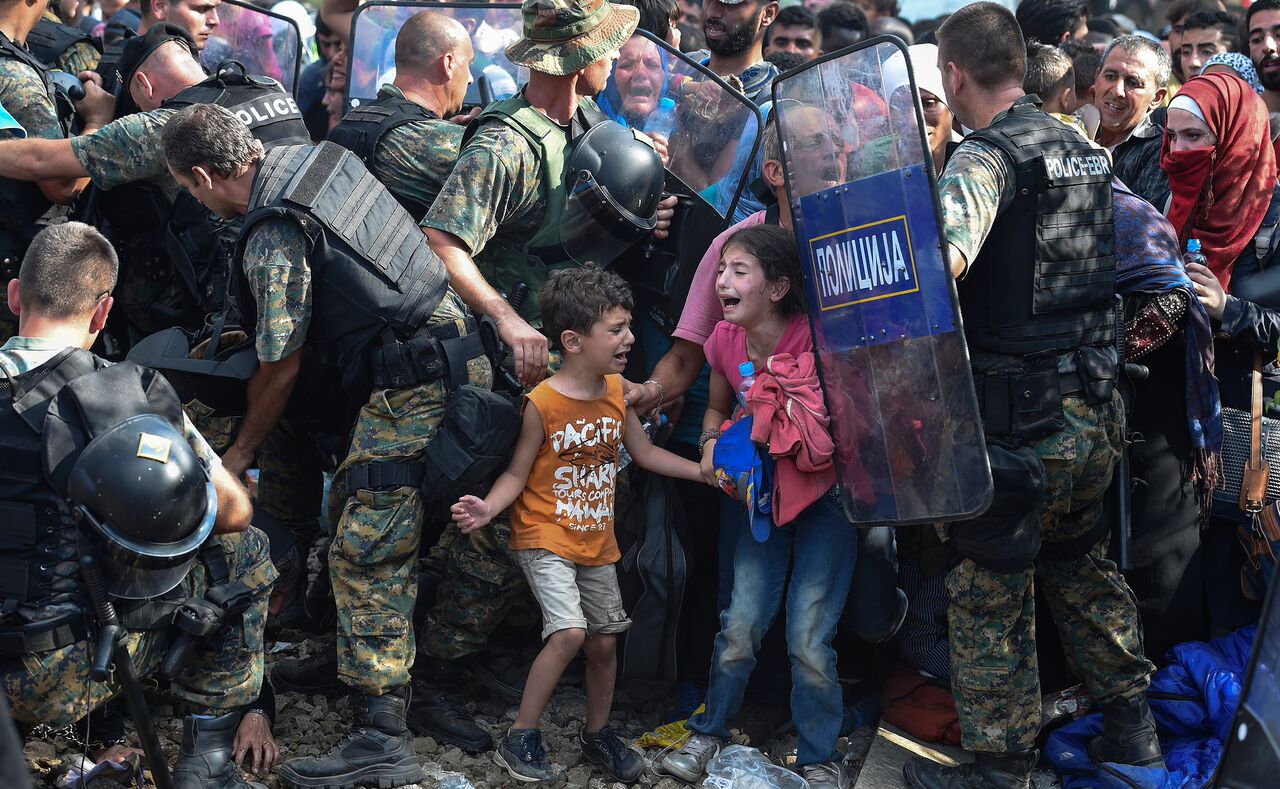
© Georgi Licovski/epa
The Cost of Conflict – The Death of Childhood
[dropcap]I[/dropcap]n the ever expanding refugee crisis, we are mourning many things – lost lives, lost freedoms, lost homelands but also we mourn lost childhoods which can never be reclaimed.
These photographs taken by international photographers for the UNICEF contest shine a light on the real cost, the real damage of wars and international conflicts.
School, play and family are all mundane things we take for granted but the ever-escalating refugee crisis ensures that these become luxuries, tastes which a child may never experience.
The human cost of conflict is just too great – ask the children.
Each year, UNICEF Germany and GEO Germany (from the publishing house Gruner +Jahr GmbH & Co KG) grant the “UNICEF Photo of the Year Award” to photos and photo series “that best depict the personality and living conditions of children worldwide in an outstanding manner.”
Macedonian Photographer Georgi Licovski is the winner with this gut-wrenching image of two refugee children at the border between Greece and Macedonia.
[dropcap]A[/dropcap]ccording to UNICEF estimates, children make up approximately one-quarter of the 730,000 refugees arriving in the European Union through the Balkan states between January and November 2015.
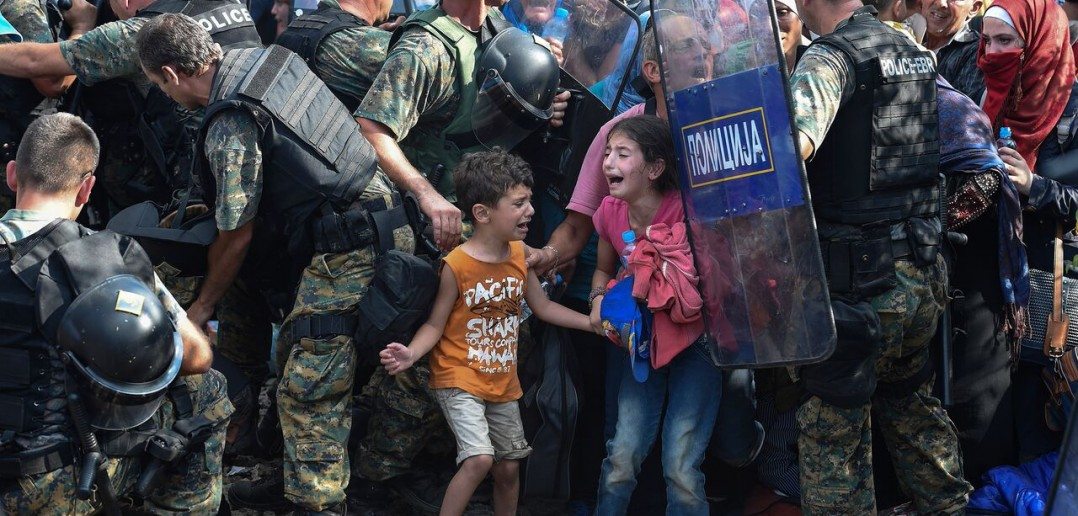
© Georgi Licovski/epa
“During his life as a photographer, he thought he had seen his fair share of suffering, from the breakup of Yugoslavia to the expulsion of hundreds of thousands of Kosovo Albanians. But the unsettling situation he had to witness here moved even him and his colleagues to tears. In order to appeal to the emotions of the Macedonian border troops, some refugees send their women and children to the front lines. With the mass of people pushing from the back, children get separated from their parents and are sometimes taken across the border by strangers while their parents and relatives are unable to get through. Another tragedy within this global tragedy that starts in Afghanistan, Iraq and Syria – and obviously doesn’t end in Europe.”
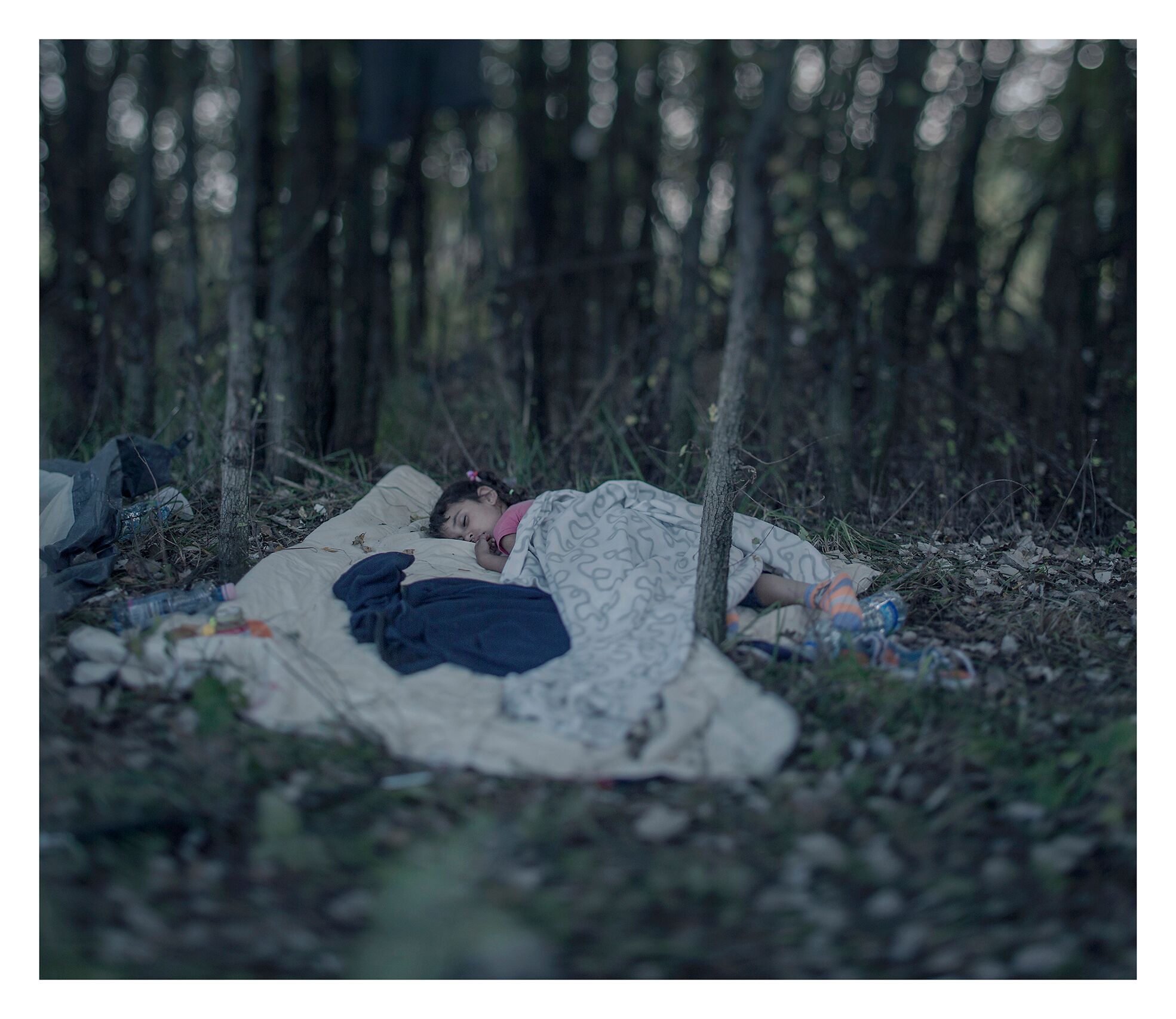
@Magnus Wennman/Aftonbladet
Second prize award: MAGNUS WENNMAN, SWEDEN
EUROPE/MIDDLE EAST: WHERE THE CHILDREN SLEEP
“They dream of home, their bed, their toys. And in their nightmares, it’s raining fire, houses explode, their siblings die. Now they sleep in tents, containers, field hospitals, at street crossings and next to train stations in foreign countries. Or, like five-year-old Lamar, in a forest near Horgos in Serbia. She fled Baghdad together with her parents and her grandmother after their house was hit by a bomb. It took Lamar’s family three attempts to get from Turkey to Greece in a dinghy.”
Photographer Magnus Wennman traveled around from Jordan up to his home country of Sweden for a photo documentary he simply calls “Where the children sleep”. It is basically a collection of horror stories from Homs and Aleppo, Daraa, Damascus and other Syrian cities.
According to UNICEF, there is no safe place left for children in Syria.
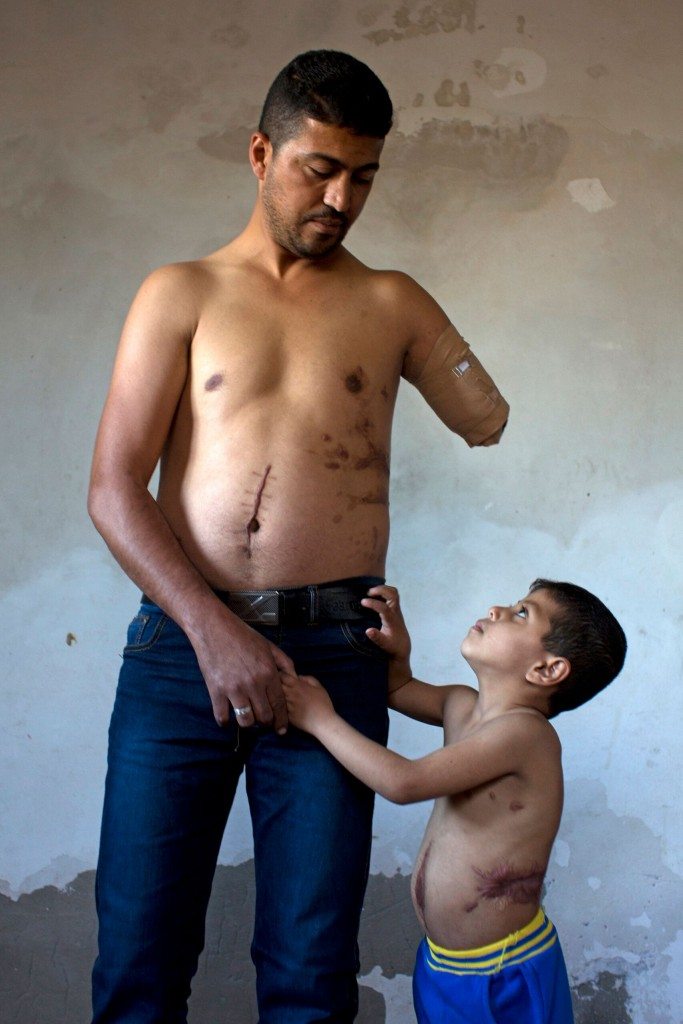
Third Prize Award: HEIDI LEVINE, USA
GAZA: WHAT BADRUDDIN HAS TO ENDURE
“Healing and Resilience in Gaza” is the title of US photographer Heidi Levine’s photo series. The mother of three the lives in Jerusalem, Israel, from where she keeps track of the events in the Gaza Strip. Healing? Resilience? You need to be strong if you’re a boy of five and have to see your father, as Badruddin does in this photo, as a man who has sustained serious injuries during an Israeli bomb attack. And also if, even as a little boy, you have been close to death yourself. After a bomb attack, Badruddin had to have his liver removed. His mother and his four brothers and sisters were killed.
Is there such a thing as a “just war”? That is for military historians, philosophers, theologians and politicians to discuss. Only one thing is clear: there is no war that spares the children.”
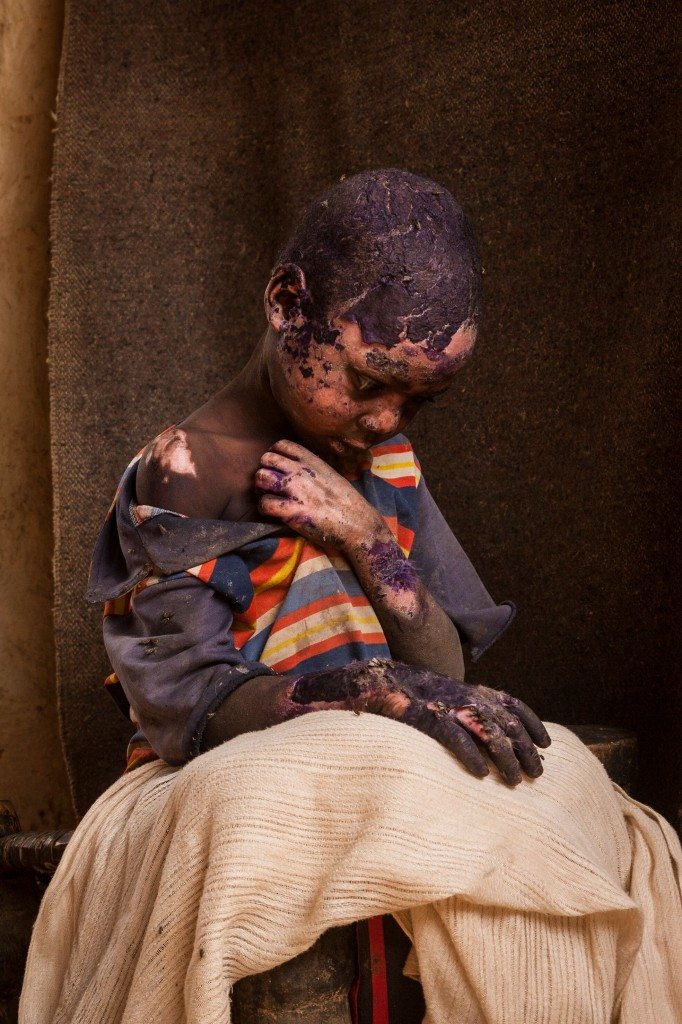
(C) Adriane Ohanesian
Honorable Mention:
ADRIANE OHANESIAN, USA / KENYA
SUDAN: THE FORGOTTEN WAR
This little boy is called Adam. He never lived in a paradise, but at least he had some kind of happy childhood, as far as this is at all possible when living in a region torn apart by civil war like Darfur in Sudan. But then came the bombers – and Adam burned. Although he was able to somehow tear off his t-shirt, he couldn’t save his skin. His neighbors tried to. It is unclear whether his burns were treated at all. He was probably given some traditional medicine to apply to the skin. Nevertheless: Adam survived.
US photographer Adriane Ohanesian, who has lived in Nairobi for many years, started to document the fate of the people in Darfur in 2010. Due to the large number of other crises worldwide, the war-torn region of Darfur has dipped far below the radar of international attention and press coverage. Adam and his family hide together with thousands of other refugees in caves to seek shelter from the ongoing bombing terror.”
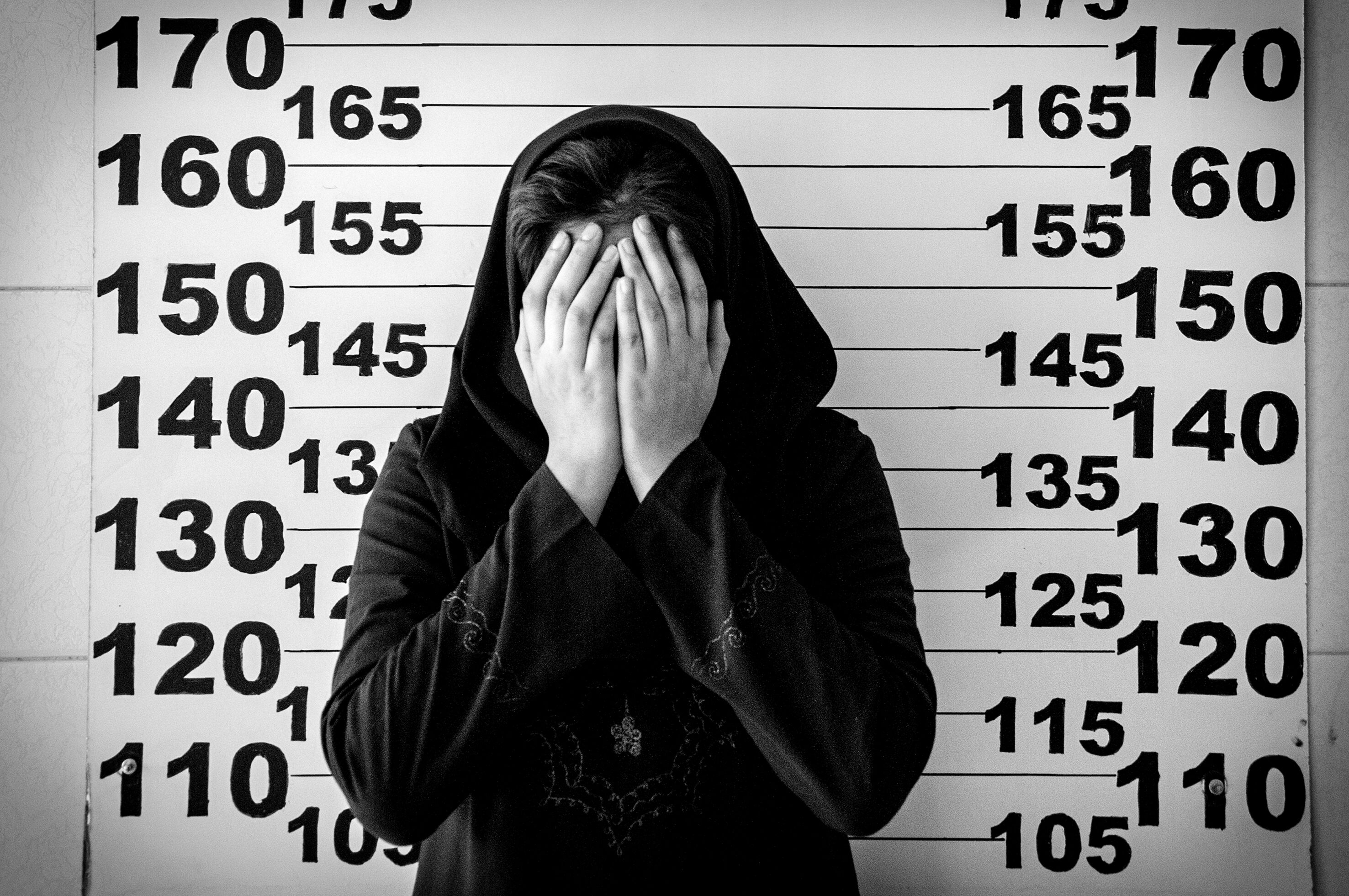
Honorable Mention:
Sadegh Souri: No mercy for the children
The photo documentary by the Iranian photographer Sadegh Souri gives an insight in the situation of girls in a juvenile detention center near Tehran.
“According to the UN Convention on the Rights of the Child (ratified by almost every nation), children who get into conflict with the law need to be treated as children. In reality, however, this right is violated in many countries.
Photographer Sadegh Souri managed to take pictures of female delinquents, aged between 13 and 18, at a juvenile detention center in Zibashahr near Teheran, Iran. Some of them could even face the death penalty, for example due to allegations such as drug possession or armed robbery. However, the sentence can only be carried out after the delinquents turn 18 – a “concession” to the international community.”
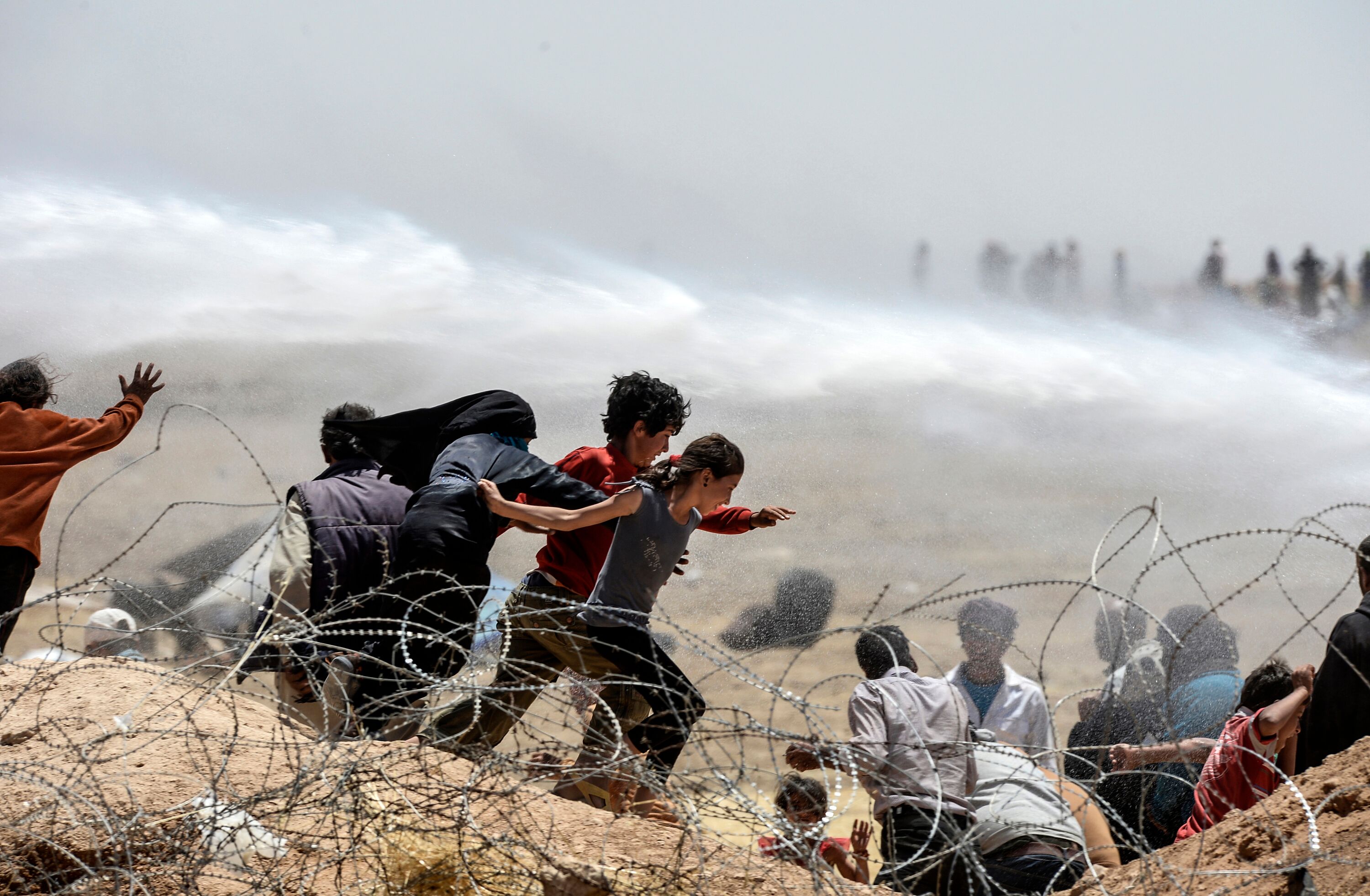
(C) Bulent Kilic
Honorable Mention: BÜLENT KILIÇ, TURKEY
SYRIAN-TURKISH BORDER: THROUGH BARBED WIRE
“These pictures were taken by Turkish photographer Bülent Kiliç, who has been one of the most outstanding observers of the Syrian tragedy for many years. Between 13 and 15 June 2015, thousands tried to flee the fighting between Kurdish fighters and IS terrorists near the city Tal Abyad and to seek refuge in Turkey. Having taken in almost two million refugees already, Turkey, however, closed the border. Desperate refugees, among them many children, were looking for holes in the barbed wire, watched by grinning henchmen, pushed back by soldiers using water cannons and firing warning shots. In the end, though, many of the refugees made it through, mostly thanks to help from compassionate Turkish civilians.
How do such experiences burn into the minds and souls of children? When will they resurface? What power do they have over the children?”
(Photos may not be reproduced without permission. All copyrights belong to photographers.)

1 Comment
Heart wrenching images!